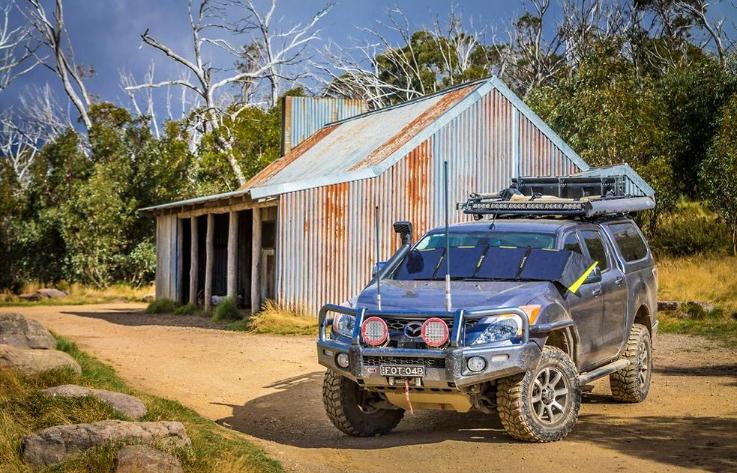
Contemporary 4×4 vehicles come with impressive capabilities right from the start. So, which modifications and accessories are truly essential, and which ones can you skip? To get insights, we turned to Pat Callinan, an Australian off-road legend and Club 4X4 ambassador.
Contemporary 4x4s exhibit remarkable capabilities right out of the showroom, but the aftermarket is teeming with a wide array of modifications and accessories.
For those new to the scene, selecting accessories and mechanical enhancements for your 4×4 can be quite perplexing. Determining what is truly essential and what isn’t can be challenging due to the abundance of contradictory advice.
To simplify matters, we’ve tapped into the knowledge of off-road veteran and Club 4X4 ambassador, Pat Callinan, to provide expert insights on outfitting your vehicle.
“Weight is a significant consideration for modern 4x4s,” Pat explains. “Make sure you genuinely require the accessory before installing it, as going overboard with various additions could lead to a heavier, less reliable, and possibly even legally problematic vehicle.”
4×4 tyres, wheels, and suspension
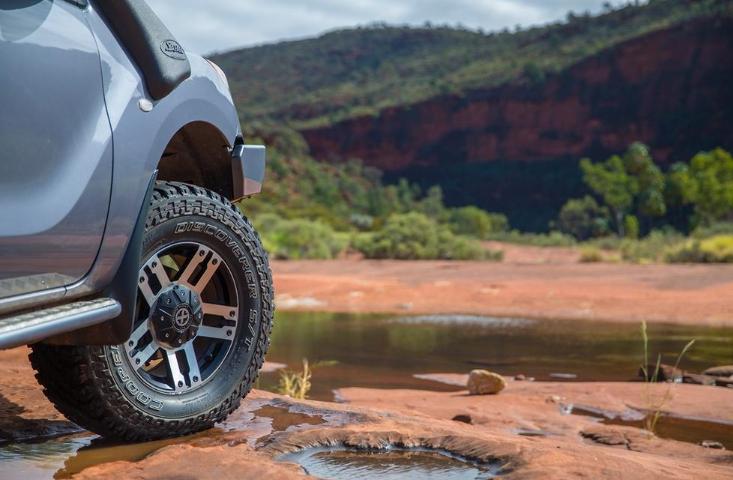
Off-road, traction reigns supreme, and investing in top-notch tires and suspension yields significant benefits. For typical touring and adventurous excursions, high-quality all-terrain tires provide solid grip and longevity while keeping road noise in check. These tires feature open tread blocks that are less prone to mud accumulation compared to regular highway tires, and their robust sidewalls offer added resistance against punctures from sharp objects.
When facing mud, clay, and similarly soft and adhesive terrains, mud-terrain tires feature an even more open tread design to aid in self-cleaning and gripping the surface. These tires are among the most robust options for 4x4s, though they tend to provide less comfort, generate more noise, and experience faster wear compared to all-terrain tires. As their name implies, all-terrain tires excel in various dry terrain conditions, making them a versatile choice for most other scenarios.
When it comes to wheels, modern factory alloys are quite robust, yet steel wheels offer even greater durability and can be more conveniently repaired in case of damage. However, the likelihood of damage is significantly lower nowadays due to the generally high quality of aftermarket rims.
Opting for aftermarket rims provides flexibility in choosing tire sizes, but it’s crucial to choose a rim width that matches your preferred tire size. Rims with widths of around eight or nine inches are generally a reliable choice, as long as they have the appropriate offset to fit your vehicle.
Opting for quality off-road suspension and a road-legal lift kit can completely enhance your 4×4’s performance both on and off the road, while also providing increased load-carrying capacity and durability for challenging terrains. A standard 2-inch lift offers the added ground clearance that proves invaluable on uneven or rugged surfaces.
“Tyres and suspension are the game-changers when it comes to off-road performance,” Pat emphasizes. “A modest suspension lift can enhance load-bearing capacity and improve obstacle traversal. Moreover, all-terrain or mud-terrain tyres boast sturdy designs that reduce the chances of punctures due to their robust build.”
Protection
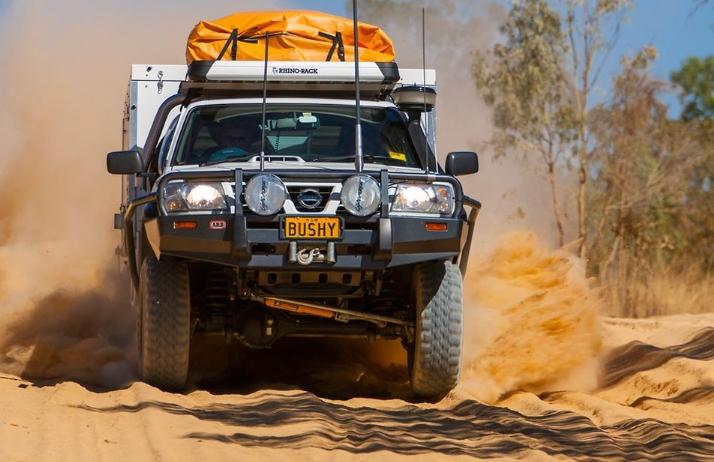
Safeguarding your vehicle is a must, and a bullbar is an obvious choice, serving as a foundation for auxiliary lights, CB antennas, and a winch. Scrub bars offer extra defense for side panels in tight spaces. Meanwhile, upgraded skid plates and other underbody safeguards are typically sturdier than stock plates, shielding your vehicle from underbody impacts.
Opting for steel rear bumpers can also be a smart move for safeguarding your vehicle during steep climbs. Some designs even include repositioning the tow hitch receiver to enhance ground clearance. Additionally, certain options provide extra mounting possibilities for spare tires, jerry cans, and other essential equipment.
Electrics
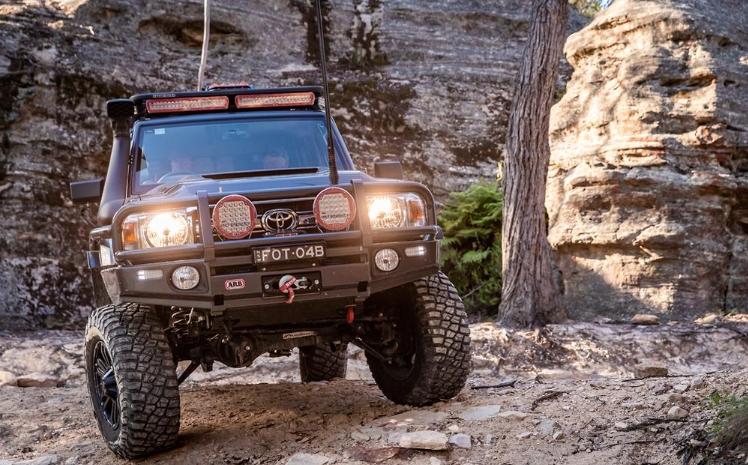
Contemporary LED driving lights and auxiliary light bars have the ability to transform nighttime conditions into daylight, significantly lowering the risk of collisions with animals or other potential road hazards.
An additional battery, on the other hand, provides you with portable 12V power – certain 4x4s have designated areas in the engine compartment, while others (especially many utility vehicles) may need a tailored arrangement in the second row or bed. Incorporating a battery management system is important, and it might be worth contemplating the use of solar blankets, panels, or a generator to ensure continuous charging, especially if you plan on extended stays.
And remember to prioritize communication: equip your vehicle with an in-car UHF radio, keep an EPIRB (emergency locating beacon) handy in the glovebox, and if you’re venturing into extremely remote areas, consider renting a satellite phone to save on costs.
“If your budget allows for it, lithium batteries are truly outstanding,” Pat advises. “While they may be pricier than traditional batteries, in my personal experience, they can last up to eight times longer. So, if you’re committed to off-roading for the long haul, they’re definitely worth their weight – or should I say, their lighter weight.”
Driveline and mechanical
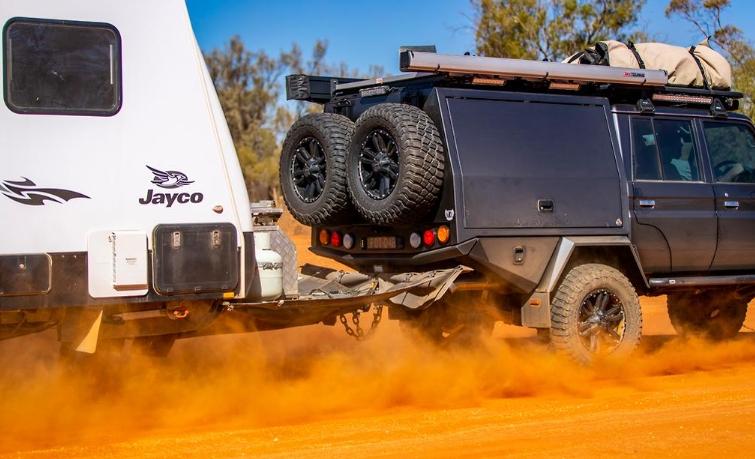
If your vehicle isn’t already equipped with a differential lock (or ‘locker’), adding an aftermarket rear or front diff lock can be a game-changer in challenging situations. A cross-axle diff lock essentially ensures that both wheels turn at the same rate, overcoming the typical issue where the differential sends power to the wheel with the least resistance. This can prevent a 4×4 from getting stuck when a wheel lifts or unloads in uneven terrain.
Both front and rear diff locks operate as cross-axle diff locks, effectively joining their respective wheels, whereas a center diff lock evenly distributes power between the front and rear axles.
Prevent expensive engine issues caused by contaminated fuel by installing an aftermarket fuel filter, and consider adding a snorkel if you’ll be encountering water crossings. In the case of diesel engines, including an aftermarket ‘catch can’ is advisable to trap oil and fuel vapor that the engine expels, preventing it from entering the intake and causing buildup.
“Quality aftermarket filters can provide up to 50 percent greater efficiency in preventing engine contamination,” Pat explains. “They often utilize superior materials and feature rubber seals, so don’t hesitate to invest in high-quality aftermarket options for long-lasting performance.”
Storage
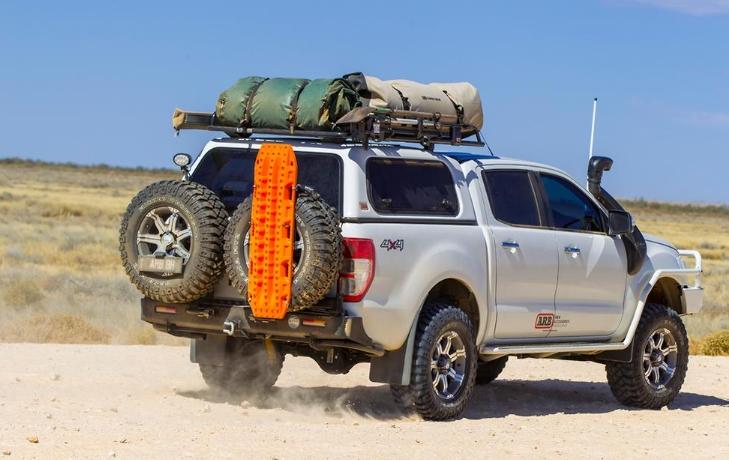
Considering the additional weight from camping, adventure, or work gear, it’s essential to pack efficiently. For pickup trucks (utes), a canopy increases the usable load area of the tray and provides added security. For station wagons, a cargo barrier offers protection to occupants by preventing objects from becoming projectiles in case of an accident.
A roof platform offers additional versatility, but make sure to consider your vehicle’s maximum roof load capacity and account for the increased overall height during travel. Tailored drawers provide specialized storage and convenient access to items like tools, spare parts, and recovery equipment. However, compatibility with a cargo barrier may vary depending on the specific model.
No matter your storage method, it’s advisable to place the heaviest items in lower positions. This is especially crucial when using roof racks, as excessive weight on the roof can lead to unsettling body roll or even the potential for a rollover.
“Can you truly call it a 4×4 without a roof rack?” questions Pat. “For those who love touring without a trailer, fitting all your gear on the inside might be quite a challenge.”
Recovery gear
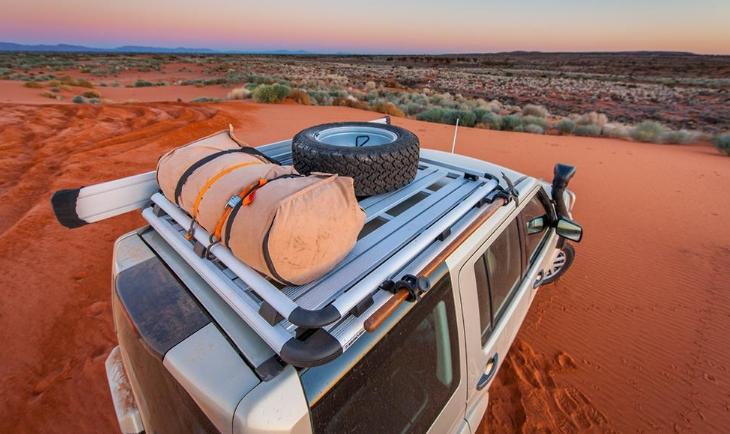
When you find yourself in a real jam, having reliable recovery gear is essential. Make sure your vehicle has sturdy load-rated recovery points both at the front and rear, not just the factory tow hooks. It’s also crucial to have D-shackles or the newer soft shackles on hand, as they can endure the immense force needed to pull your vehicle’s maximum weight out of a muddy situation.
On that note, it’s important to have a snatch strap or tow rope, and if you’re going solo without a buddy to help, a winch becomes essential. Additionally, pack recovery tracks, a shovel with a long handle, and all your tire repair equipment, including a 12V air compressor.
4×4 modifications and accessories to avoid
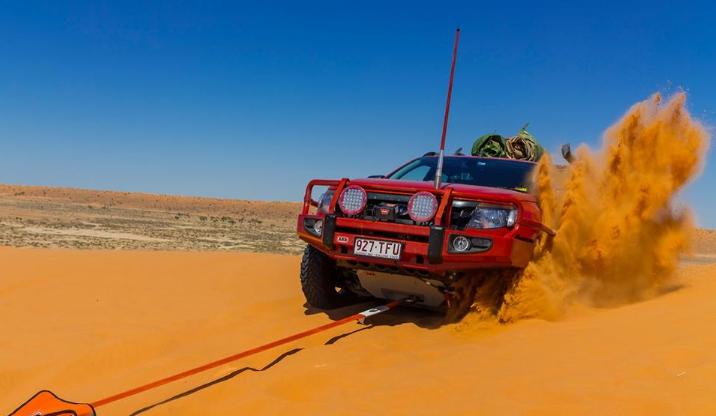
While each of the aforementioned aspects has the potential to transform your previously standard 4×4 into an exceptional adventure vehicle, there are also pitfalls for newcomers that could potentially disrupt your escapades right from the beginning.
“I tend to steer clear of heavy items like cast-iron fire pits,” explains Pat. “While they might be enjoyable once in use, they contribute to weight and can be cumbersome to set up. Additionally, avoid excessively large suspension lifts. While they might appear impressive, they often lead to reduced reliability and aren’t truly necessary unless you’re engaging in intense rock crawling.”
Here are some further tips to smooth the journey…
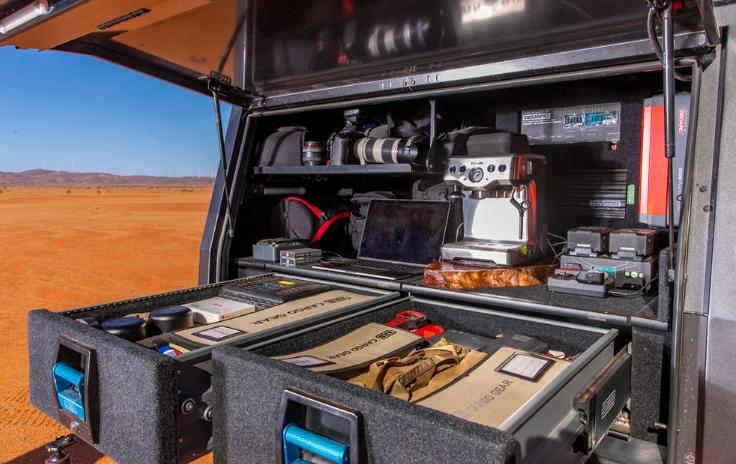
Going too far
Amid the multitude of gear competing for your focus (and your wallet), there exists a genuine possibility of succumbing to the allure of acquiring numerous accessories. The consequence? You run the risk of burdening your vehicle excessively, significantly impeding its performance and balance, and potentially causing damage to components that weren’t intended to bear such loads.
While budget constraints will often dictate the choices, the guiding principle remains unchanged – exercise restraint and equip your vehicle with accessories that align with your specific needs.
Fitting cheap gear
The appeal of inexpensive equipment comes with its own risks. While it might suffice for occasional trips, opting for top-notch 4×4 gear can offer long-term reliability. Challenging off-road terrains and rugged roads test equipment to its limits, and occasionally beyond, often in remote areas far from assistance. The solution lies in investing in high-quality gear that ensures dependable performance even in the toughest situations.
The wrong recovery gear
Ensure you have the appropriate recovery gear and understand its proper usage, especially in winch recoveries. Utilize gloves, tree protectors, damper bags, and be well-versed in the safe operation of winches and items like snatch blocks. Similarly, before acquiring a high-lift jack, confirm that your vehicle has suitable jacking points – as not all 4x4s are equipped with them.
“If you’re a beginner, my advice is to get out there with whatever gear you have, even if it’s budget-friendly,” suggests Pat. “You’ll quickly figure out what’s reliable and what’s not. However, when it comes to recovery gear, don’t compromise – the inexpensive options can be seriously risky.”
Not upgrading the driver!
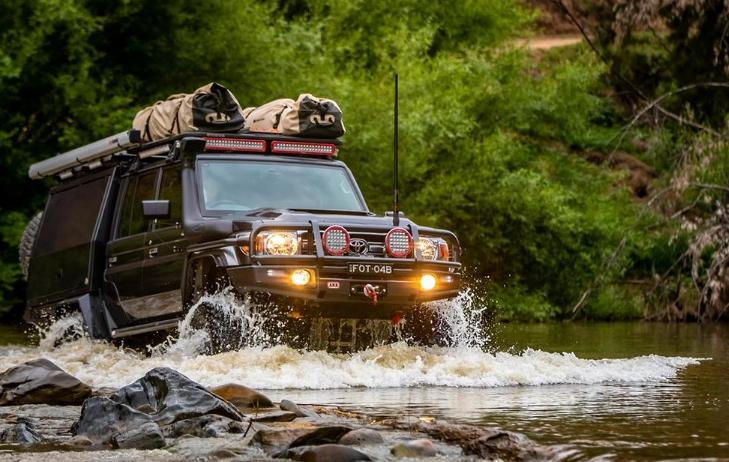
If you’re a newcomer to off-roading, one of the most valuable investments you can make is in your own skillset. Enroll in an off-road driver training course, preferably one that includes comprehensive vehicle recovery techniques. This investment can yield multiple benefits, as outlined below.
“I strongly advise considering enrolling in a 4×4 course,” suggests Pat. “While people might readily invest $50,000 in a 4×4, they sometimes overlook spending $500 to learn how to effectively use it. It’s a worthwhile expenditure in my opinion.”
4×4 insurance that works
Accessories and modifications can come with a hefty price tag, and it’s important to note that numerous insurance policies may not provide coverage for these expenses.
Club 4X4 steps in to address this issue. Designed by passionate 4×4 enthusiasts for fellow enthusiasts, Club 4X4’s insurance not only provides an agreed or market value for your vehicle, but also an agreed value for all the modifications and accessories you’ve added, including the associated labor costs. This guarantees that your vehicle’s actual worth is accurately represented in your policy – a gap that mainstream insurers often fail to bridge.
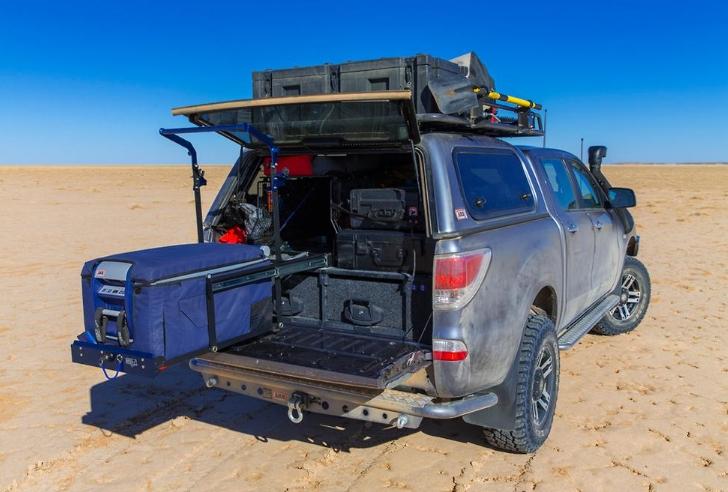
Every Club 4X4 policy encompasses $2000 worth of coverage for personal belongings (excluding laptops and cameras), with the possibility to enhance it to $5000 or $10,000. This protection extends to your equipment across Australia, even if you’re transporting the specified items in another vehicle, such as bringing your portable fridge in a friend’s car.
Combine insurance coverage that applies wherever legal 4×4 driving is possible in Australia with the added comfort of off-road recovery coverage, and Club 4X4 provides 4×4 owners and enthusiasts with the protection they need to concentrate on the exciting adventures that lie ahead.
Even more enticing, policyholders who successfully complete an approved off-road driver training course are eligible for a premium discount!
- Share:
